World’s Largest Complex Of Borobudur – Spectacular Buddhist Masterpiece
A. Sutherland - AncientPages.com - The magnificent Borobudur is the world's largest Buddhist shrine, and one of the finest examples of eighth-century temple architecture. The Borobudur Temple, situated in central Java.
It was constructed in the 8th and 9th centuries AD during the reign of the Syailendra Dynasty, a prominent Indonesian dynasty that flourished in Java after the fall of the Funan kingdom of mainland Southeast Asia.
Aerial view of Borobudur, it took the form of a step pyramid and mandala plan. source
This architectural marvel was constructed when Buddhism and Hinduism were still the dominant religion in the region. Later, the temple was several times buried due to powerful volcanic eruptions. It remained abandoned for several hundred years before its rediscovery by the British in the 19th century.
The whole temple is in the form of a lotus, the sacred flower of Buddha. It was built in three tiers: a pyramidal base with five concentric square terraces, the trunk of a cone with three circular platforms, and at the top, a monumental stupa. The walls and balustrades are decorated with fine low reliefs, and around the circular platforms, seventy-two openwork stupas with Buddhas were constructed.
For each direction, there are 1,460 relief scenes and ninety-two Dhyani Buddha statues. (Dhyani’ is derived from the Sanskrit dhyana, meaning “meditation.” )
The monument is located in the Kedu Valley, in the southern part of Central Java, at the center of Java, Indonesia.
The structure, composed of 55,000 square meters of lava-rock is erected on a hilltop and it has a shape of a stepped pyramid of six rectangular stories, three circular terraces, and a central stupa is located at the summit.
Borobudur covers a huge area, measuring 123 x 123 meters. The perfection of this stone monument is clearly seen in its design and its decoration in the form of 2,672 carved relief panels and 504 Buddha statues.
Despite its gigantic size, historical records of its decades-long construction are sparse. The structure, built without using any kind of cement or mortar, and yet, all its parts – hold together, perfectly.
Aerial view of Borobudur. Credit: Adobe Stock - Adel
The vertical division of Borobudur Temple into base, body, and superstructure is in perfect agreement with the concept of the Universe in Buddhist cosmology - Bhumisambara, Borobudur’s original name.

Borobudur. Image credit: Anton Diaz. source
The shrine was built as a stepped pyramid. At the base of the massive temple, there are reliefs of Karmawibhangga' - depiction of human life in the endless cycle of death and rebirth (samsara) and the law of cause and effect, according to the karmic law.
See also:
8 Remarkable Jain Temples – Marvelous Ancient Architecture And Stone Carvings
These reliefs were carved on all sides over andesite stones. Above the base of the shrine, there are multiple layers of structures that symbolize the world of desires (Kamadhatu) at the low levels; the world of forms (Rupadhatu) is at the mid-levels, and the so-called formless world (Arupadhatu) is at the upper levels.
To attain enlightenment - means to walk this long path.
Written by – A. Sutherland - AncientPages.com Senior Staff Writer
Copyright © AncientPages.com All rights reserved. This material may not be published, broadcast, rewritten or redistributed in whole or part without the express written permission of AncientPages.com
Expand for referencesMore From Ancient Pages
-
 More Than 1000 Bones Of Extinct Predators From 240 Million Years Ago – Found In Upper Silesia, Poland
Fossils | Dec 11, 2023
More Than 1000 Bones Of Extinct Predators From 240 Million Years Ago – Found In Upper Silesia, Poland
Fossils | Dec 11, 2023 -
 Dandaleith Stone: Scotland’s Rare Symbol Stone Of The Picts – Will It Be Deciphered Now?
Ancient Symbols | Jan 21, 2016
Dandaleith Stone: Scotland’s Rare Symbol Stone Of The Picts – Will It Be Deciphered Now?
Ancient Symbols | Jan 21, 2016 -
 Rare 2,500-Year-Old Scythian Bone Sceptre Discovered In Bulgaria
Archaeology | Oct 3, 2023
Rare 2,500-Year-Old Scythian Bone Sceptre Discovered In Bulgaria
Archaeology | Oct 3, 2023 -
 Excavations Of 7th Century Shipwreck In Israel Reveal Christian And Muslim Symbols
Archaeology | Aug 1, 2020
Excavations Of 7th Century Shipwreck In Israel Reveal Christian And Muslim Symbols
Archaeology | Aug 1, 2020 -
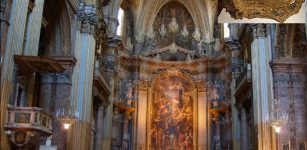 Are Relics In Santi Apostoli Church Really The Remains Of St. James And St. Philip?
Fossils | Feb 8, 2021
Are Relics In Santi Apostoli Church Really The Remains Of St. James And St. Philip?
Fossils | Feb 8, 2021 -
 Day Of The Dead: From Aztec Goddess Worship To Modern Mexican Celebration
Ancient Traditions And Customs | Oct 30, 2019
Day Of The Dead: From Aztec Goddess Worship To Modern Mexican Celebration
Ancient Traditions And Customs | Oct 30, 2019 -
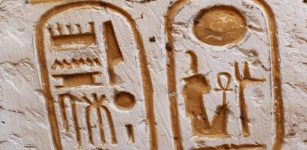 Palace Located Inside Ancient Temple Of Ramses II Discovered In Abydos, Egypt
Archaeology | Apr 1, 2019
Palace Located Inside Ancient Temple Of Ramses II Discovered In Abydos, Egypt
Archaeology | Apr 1, 2019 -
 It’s Possible To Find Your Ancient Doppelganger – This Is What You Need To Do
Archaeology | Apr 26, 2017
It’s Possible To Find Your Ancient Doppelganger – This Is What You Need To Do
Archaeology | Apr 26, 2017 -
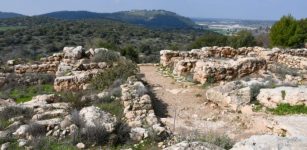 Story Of David And Goliath Linked To Horvat Qeiyafa In The Valley Of Elah, Israel
Archaeology | Feb 22, 2022
Story Of David And Goliath Linked To Horvat Qeiyafa In The Valley Of Elah, Israel
Archaeology | Feb 22, 2022 -
 DNA From 35,000-Year-Old Romanian Skull Reveals Flaws In The Theory Of Evolution
Archaeology | May 25, 2021
DNA From 35,000-Year-Old Romanian Skull Reveals Flaws In The Theory Of Evolution
Archaeology | May 25, 2021 -
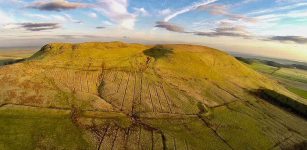 Archaeologists Discover Over 100 Ancient Settlements North Of Hadrian’s Wall
Archaeology | May 26, 2022
Archaeologists Discover Over 100 Ancient Settlements North Of Hadrian’s Wall
Archaeology | May 26, 2022 -
 Biblical Prophet Jeremiah Whose Prophecies Disappointed People
Biblical Mysteries | Jan 30, 2019
Biblical Prophet Jeremiah Whose Prophecies Disappointed People
Biblical Mysteries | Jan 30, 2019 -
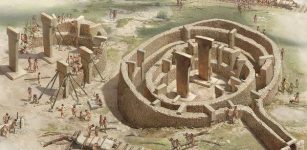 Mysterious Skull Cult At Göbekli Tepe – Ancestor Worship Or Trophies Of Dead Enemies?
Archaeology | Jul 25, 2017
Mysterious Skull Cult At Göbekli Tepe – Ancestor Worship Or Trophies Of Dead Enemies?
Archaeology | Jul 25, 2017 -
 Medieval Criminals Could Avoid Persecution By Claiming Sanctuary In Churches
Ancient History Facts | Mar 3, 2017
Medieval Criminals Could Avoid Persecution By Claiming Sanctuary In Churches
Ancient History Facts | Mar 3, 2017 -
 Legendary Bladud: The Flying King And Historical Founder Of Bath, England
Featured Stories | Mar 8, 2016
Legendary Bladud: The Flying King And Historical Founder Of Bath, England
Featured Stories | Mar 8, 2016 -
 On This Day In History: Sir Thomas Brisbane, Astronomer, Soldier And Governor Was Born – On July 23, 1773
On This Day In History | Jul 23, 2016
On This Day In History: Sir Thomas Brisbane, Astronomer, Soldier And Governor Was Born – On July 23, 1773
On This Day In History | Jul 23, 2016 -
 Babylon Excavation Uncovers 478 Artifacts, Including Cuneiform Tablets and Seals
Archaeology | Oct 17, 2024
Babylon Excavation Uncovers 478 Artifacts, Including Cuneiform Tablets and Seals
Archaeology | Oct 17, 2024 -
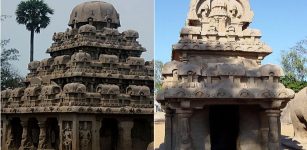 Mahabalipuram: Ancient Ruined City And Its Marvellous Rock-Cut Architecture In South India
Featured Stories | Jul 25, 2021
Mahabalipuram: Ancient Ruined City And Its Marvellous Rock-Cut Architecture In South India
Featured Stories | Jul 25, 2021 -
 Remarkable South-Pointing Chariot – Ancient Cybernetic Machine Invented 1,700 Years Ago Is An Engineering Masterpiece
Ancient Technology | Jul 17, 2014
Remarkable South-Pointing Chariot – Ancient Cybernetic Machine Invented 1,700 Years Ago Is An Engineering Masterpiece
Ancient Technology | Jul 17, 2014 -
 Unique Purbeck Marble Found On England’s Oldest Historic Shipwreck
Archaeology | Jun 14, 2024
Unique Purbeck Marble Found On England’s Oldest Historic Shipwreck
Archaeology | Jun 14, 2024



